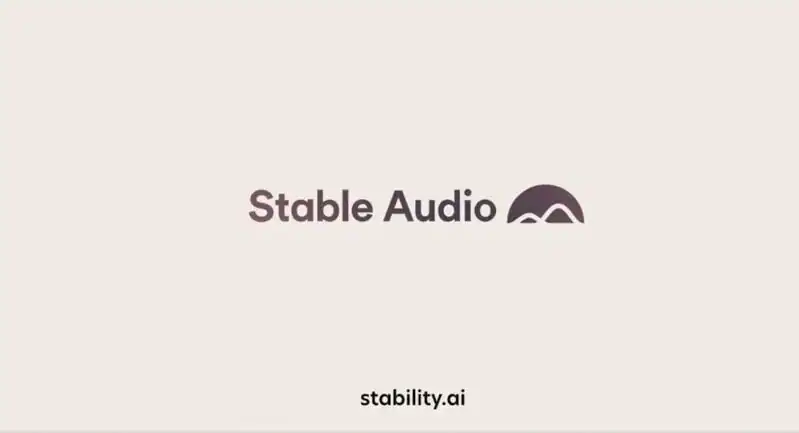Stability AI Revolutionizes Music: Open-Sources 'Stable Audio 2.0' for Creators

Stability AI's 'Stable Audio 2.0' Ushers in a New Era for AI-Generated Music
Stability AI has made waves in the music technology world by releasing its latest model, Stable Audio 2.0, as open source, granting musicians and developers unprecedented creative and commercial freedom. This move is being hailed as a milestone for generative AI in audio, expanding the possibilities for composition, sound design, and multimedia production—all with royalty-free results[1].
Open-Source Breakthrough: Democratizing AI Music Generation
Unlike previous audio AI models that placed restrictive licenses or were kept proprietary, Stable Audio 2.0 is freely available for all under a permissive license. The model can generate original, high-fidelity music tracks up to three minutes long, conditioned using both text descriptions and audio input. This update allows professionals and hobbyists alike to experiment with vocal samples, instrument stems, and more, without legal hurdles[1].
Commercial Impact and Industry Comparison
Stable Audio 2.0 stands out from competitors like Suno and Meta’s AudioCraft by combining full audio-to-audio and music-to-music workflows with the most flexible licensing in the sector[1]. Early adopter feedback highlights the model’s ability to rapidly prototype new soundtracks for films, games, and advertisements at a fraction of the usual cost and turnaround time. Industry analysts point out that, while models like Meta’s AudioCraft offered similar audio quality, Stability's open approach removes key barriers hindering mainstream adoption by creative technologists.
Technical Innovation: Extended Control and Higher Fidelity
The new model also brings advances in audio fidelity, sampling rate (44.1 kHz), and control over musical structure. Users can specify not only genre and mood, but also instrumental layering and duration, enabling more purposeful soundscapes. Developers note particular excitement for iterative music refinement: uploading a rough melody lets the model generate variations, adapt instrumentation, and even blend styles seamlessly—all essential for soundtrack and ad production pipelines[1].
What Comes Next? Perspectives from Creators and Experts
Experts predict open sourcing Stable Audio 2.0 will accelerate cross-industry adoption of AI-driven music tools. Professional sound engineers on AI forums suggest the model's high flexibility and lack of licensing restrictions could lead to new platforms for collaborative music making, and even novel copyright regimes[1]. Skeptics, meanwhile, caution that the ease of content creation may amplify concerns about genre saturation and potential misuse, underscoring calls for ongoing transparency in music AI development.
Regardless, Stability AI’s latest move is already being credited as a pivotal step towards democratizing high-quality, AI-powered music production—a development closely watched by musicians, tech companies, and rights organizations worldwide.
How Communities View Stability AI’s Open-Sourcing of Stable Audio 2.0
Stability AI’s release of Stable Audio 2.0 as open source has ignited vibrant debate across social platforms, particularly on X/Twitter and Reddit. The central questions revolve around creative empowerment, industry competition, legal implications, and music’s future in the AI era.
-
Enthusiastic Creators & Developers (≈40%)
Many musicians, producers, and AI developers are celebrating (@beatomata, @ai_soundsmith) the model’s flexibility and the creative freedom open licensing brings. Threads on r/MusicProduction showcase user experiments remixing tracks, noting how even hobbyists can now generate polished audio at no cost. Several highlight the ability to fine-tune compositions using both text and audio prompts, calling this a "game-changer for small studios." -
Cautious Optimists (≈25%)
Some users, such as @soundlawyer and r/WeAreTheMusicMakers, express excitement about innovation but raise queries about the legal status of derivative works and the long-term impact on human musicians’ livelihoods. There’s a consensus this release pressures closed competitors like Suno and Meta, forcing the broader industry toward more accessible AI tools. -
Industry Watchers & Experts (≈20%)
Influencers such as @musictechguy and @AI_MediaReport point to the precedent this sets for audio AI, suggesting commercial studios may quickly adopt open-source AI given the removal of licensing hurdles. Analysts note the speed at which new platforms and plugins are emerging around Stable Audio 2.0, fueling an ecosystem effect. -
Skeptics & Critics (≈15%)
On r/technews and in replies to @stabilityai, some users caution about genre oversaturation, music copyright confusion, and possible misuse for spam or deepfake audio. One notable critic, @copyright_advocate, argues for stronger guardrails on re-use and clear monitoring of the model’s real-world uptake.
Overall, sentiment on both X/Twitter and Reddit is largely positive, with the majority of community engagement focused on new creative workflows and market disruption. Noted music AI experts (@taraneh_ai, @alexcourson) believe the shift to open source could cement Stability AI’s role as an industry standard while accelerating responsible innovation.